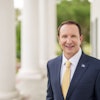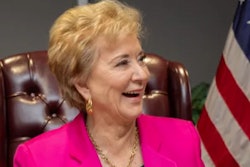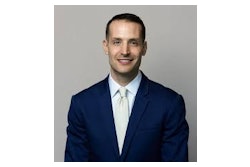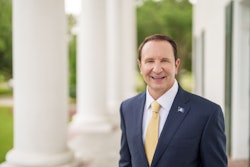Changing Frequency
Newly formatted Black college radio stations work to jazz up their image, while serving campus and community
NASHVILLE, Tenn.
Before Fisk University’s radio station recently began using the tagline “Smooth Side Up” to refer to its new smooth jazz format, the station’s broadcasting image was upside down. At best, it played a hodgepodge of music, with no connecting format, and was known more for its somewhat low-brow syndicated programming and local talk shows, many of which were nothing more than fillers, according to the station’s new boss.
In an attempt to achieve some local market share, the station, WFSK, aptly tried to appeal to Nashville’s growing international community — with locally produced programs directed toward Latinos, Ethiopians and East Indians. But such attempts appeared to get lost amid the station’s overall disorganization.
That changed in August 2002 when Fisk University President Carolynn Reid-Wallace hired Peter Woolfolk as vice president for communications and public relations. Woolfolk, a former communications consultant for a division of the National Institutes of Health, spent years in radio in the Washington, D.C., area. He says before he was hired at Fisk, he asked that the radio station be restructured under his control, a move that Reid-Wallace accepted. Before then, the station was under auxiliary services, he said.
“For all practical purposes, it was an embarrassment,” Woolfolk says of the radio station before he came. “There was Celtic music on there; there was Hindu music; there was pre-recorded programs on there from various parts of the country. The quality of the broadcast was not good in terms of broadcast standards. … The perception of the few listeners that were out there is that it was awful. You could barely find anyone who knew Fisk had a radio station and fewer who would listen.”
Now, just over a year later, and with the potential to reach 900,000 people in the Nashville area, thousands of residents are tuning into the first radio station on the FM dial — WFSK-88.1. The university’s smooth-jazz format — which offers the flexibility of playing instrumental renditions of popular music, as well as the hip contemporary sounds of neo-soul artists like Jill Scott — has struck a resounding chord here.
Along with the new format, which was launched in December 2002, Woolfolk cut many of the old programs and added others. The station now features a news program hosted by a local columnist, who has brought several newsmakers to the show. Many of the international programs have remained but with a clearer focus.
The university has not yet conducted any research to indicate who is listening to WFSK and why, but anecdotal evidence suggests that a cross-section of listeners — multiracial and educated — are tuning in. According to Robert Luke, the morning on-air personality most associated with Fisk’s new format, a recent Arbitron rating suggests that WFSK is gaining market share, particularly in the morning amid the stiff competition of “The Tom Joyner Morning Show” and the “Doug Banks Morning Show.”
“If you’re going to compete with the Doug Banks and the Tom Joyners, then you have to break that racial divide,” Luke says. “Smooth jazz has the ability to do that. It’s not offensive to anybody. …The support is really there.”
Serving the Community
Fisk is among at least 54 radio stations at historically Black colleges and universities, and many of its counterparts share similar struggles, according to Lo Jelks, chairman of Black College Radio, a trade organization founded 25 years ago to help support Black college radio stations.
Most campus radio stations are set up to serve as a training ground for students interested in broadcast communications. According to Jelks, many Black college radio stations suffer from poor leadership and expertise — hiring managers with no broadcasting experience. Many stations, he says, try to compete with commercial radio stations by playing hip-hop music with no provocative, locally produced educational programming. The net result: under-resourced stations trying unsuccessfully to mimic commercial stations at the expense of critical needs of the mostly Black communities in which they’re located.
“Black college radio stations have a unique opportunity to do a tremendous service not only dealing with their particular campuses but with the community they serve,” Jelks says. “These stations have the ability to make a difference in their communities. Many of them are doing that but too many of them aren’t. And what I mean by that is that many of these stations are trying to duplicate the commercial stations. We’re heavy on entertainment, but we lack information.
“I wouldn’t classify (the state of Black college radio stations) as being an ‘F’ rating, but we’re dealing with about a ‘C.’ If there were one wish I had more than anything else, it would be for these stations to explore different types of formatting and if there could be new emphasis on information rather than all of this music. Then I think these stations could better serve their communities,” Jelks says.
Some stations are adding more informative programming.
At WCLK, the jazz station at Clark Atlanta University, a program called “Power Point” is produced in CAU’s studios and syndicated nationally to 40 radio stations in mostly urban areas. “Power Point” features news on politics, health and finance.
“We pretty much have implemented more public affairs programming because of community need,” says Wendy Williams, general manager of WCLK. “We have been able to beef up our program lineup.”
Wiley College’s radio station KBWC is another example of a Black college radio station that has reinvented itself. They received Black College Radio’s award this year for the station with the most community service, and KBWC’s Sean Nickelberry was honored as program director of the year.
“We’ve gotten a lot of positive feedback,” says Shannon “Mercedes” Levingston, general manager of KBWC radio. “In two years, we actually turned the station around … The station was only a one-format station (jazz), and the community wanted more of a variety. So in the last two years we now offer more of a variety, a mix of gospel, R&B, hip hop, smooth jazz, blues, reggae and old school. We call ourselves ‘The Mix.’ The music is parted and formatted so there’s a particular day and time when the audience is more apt to be listening to (a certain) type of music. Two years ago, we were broadcast from 6 a.m. to midnight. Now, we’re 24-7.”
The radio station, which has existed for 27 years, has made it a point to be visible in the community.
“The station formed a club named ‘KBWC Street Team,’ to show that KBWC was about campus and community,” Levingston says. “We sometimes created our own events and community service and other times we attached ourselves to pre-existing events to show that we’re in the community and that we’re on campus.
“We had to show (Black College Radio) the type of activities that we’re involved in. … Like when we went to nursing homes for Valentine’s Day and put on a program and helped serve lunch. We had one public service event a month — like for lupus and for breast cancer awareness. We also pass out literature in the community.”
Levingston adds that they now have student involvement, and the campus and community is excited about the station. “We’ve done surveys, and they’ve indicated that we’ve come a really, really long way.”
Strength in Numbers
Additionally, a consortium of Black college radio stations that are members of National Public Radio pushed for the creation of the “Tavis Smiley Show.” The consortium — headed by radio stations at CAU, Morgan State, Jackson State, North Carolina Central and Texas Southern universities — urged executives at NPR to bring Smiley on in order to appeal to African American listeners.
“The consortium has made us stronger,” Williams says. “We want to be able to develop more programs that we can share among stations, which will cut down on our costs.”
Black College Radio’s Jelks said moderate to high costs also are stifling Black college radio stations.
Fisk’s Woolfolk couldn’t offer a line-item amount of the expenses at the station. At CAU, Williams didn’t want to give an exact figure but said the station employs 20 full-time employees, some on grants. Williams also said that 45 percent of the station’s annual budget comes from the university, 20 percent from the Corporation of Public Broadcasting, and 35 percent from grants, underwriting and membership dues.
Both Fisk and CAU are private schools and both stations are non-commercial.
“What we hear more than anything else is money — their lack of adequate funding from their institutions,” Jelks says. “When it comes to expanding and modern equipment, that is more of a money thing.”
At Fisk, Woolfolk said, money wasn’t the cause of its station’s past failures. Though he didn’t offer any answers — “I wasn’t here,” he said — it appears that proper organizational structure and management were the keys to the station’s new success. This summer, the station installed some new equipment. And now that WFSK has a larger listening audience, companies and individuals are underwriting shows and even sponsoring fund-raisers to support the station.
“Funding really doesn’t play a major role in terms of the programming” at Fisk, Woolfolk says. “Programming is deciding what it is you’re going to put on the air. There never should have been a concern that at least the standards are increased or improved. Regardless of what you have on the air at least you can improve the way it is delivered and the way it comes across to the listener.”
Black College Radio’s 26th annual convention will be held April 2-3, 2004, in Atlanta. For more information, visit
© Copyright 2005 by DiverseEducation.com


















